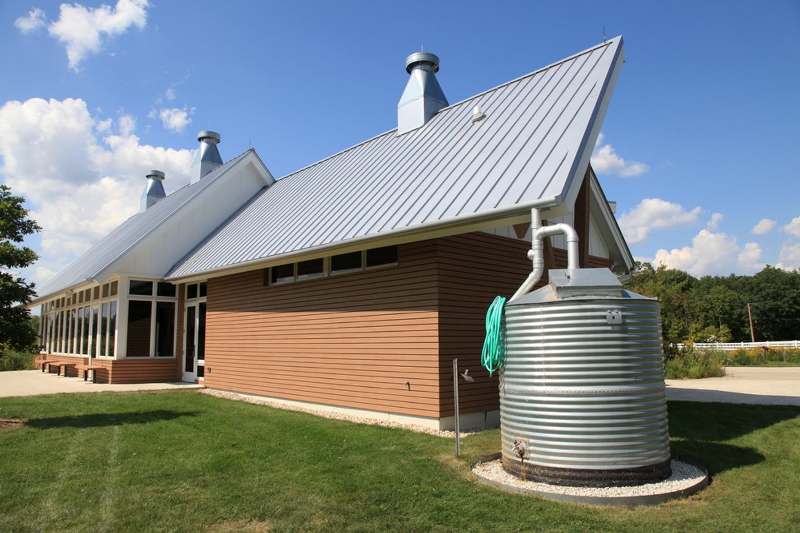
Farm Safety 101: The Complete Safety Guide to Prevent Accidents During Rainwater Harvesting
Imagine a group of people whose ancestral land is thousands of kilometers of bare, arid land. A place where the quantity of water to grow crops is only as plenty as the sweat on the backs of locales during the sweltering heat. The only source of water sufficient for crop production is the rain, which falls for about three months in a year, only to disappear, leaving the region thirsty for water.
The above analogy is the reality of middle eastern countries like Israel, with little precipitation and water drainage. Hence, the need to develop an efficient system for conserving and maximizing every drop of rainwater gave rise to rainwater harvesting.
Why is Rain Water Harvesting Useful?
Rainwater harvesting is a good and efficient way of conserving water. Stored water becomes useful during droughts, natural disasters, nuclear wars, and emergencies where contaminants enter other water sources. In Australia, harvested rainwater ensures an abundant water supply for crop irrigation, which helps boost crop output, which enables the agricultural industry and increases the chances of finding semi and skilled labor harvest jobs.
Safety Precautions During Rainwater Harvesting
Divert the First Flush of Rain Water

Diverting is essential for the first rainfall of the year or after a long period without rainfall. This is necessary because the first rain contains a high concentration of dissolved dust particles and chemical elements like carbon monoxide from car exhausts and industries that are very harmful to plants and animals. Also, rooftops from where water collects into storage tanks become dirty with dust and debris after months of no rainfall.
Therefore, it’s advisable not to collect the first flush of rainwater. Instead, let it wash away all the dust and dirt on rooftops and pipes before commencing collection.
Avoid Drinking Untreated Rainwater
Undoubtedly, rainwater is the purest form of water. To date, many argue and remain unconvincingly adamant that this water source from above is better than reticulated water systems such as water collected and treated in dams. Although clean, it’s important to note that unfiltered rainwater, especially from rooftops, contains dust, dirt, bird droppings, and all whatnots that could be harmful to you. It’s okay to thirst for pure, cold rainwater straight from the sky. However, avoid drinking it without first purifying.
Avoid Watering Vegetables with Unfiltered Rainwater
Using contaminated stored water to wet vegetables is almost as bad as consuming it. Healthwise, it’s highly unadvisable to wet veggies with infested water, contaminated with bacteria found on zincs and roof shingles, even if you were to wash before eating. Only use unfiltered water for garden places plants like flowers and succulents.
Refrain from Using Contaminated Water in Swimming Pools
Swimming in unchlorinated water could pose health risks. Fungi, bacteria, and germs present in unfiltered rainwater may be harmful to the human skin, thereby causing skin-related diseases. Furthermore, infections may arise when germs enter the body’s orifices, such as eyes, ears, and places where poop and urine leave the body.
Keep Storage Tanks Shut
Storage tanks are large receptacles that you can use in storing harvested rainwater. Consequently, it’s imperative to ensure that tanks’ lids are firmly shut and in place as they may pose drowning risks should children attempt to swim in them. Adventurous kids may still open storage barrels. So, if you’re thinking of putting locks on barrel lids, you’re not overdoing it.
Additionally, since a tank is a standing body of water, it becomes a favorite breeding ground for mosquitoes. Hence, covering it shuts it off from insects and dirt. Please take note of pipes and other water inlets and cover them with nets likewise.
Lastly, double-check to ensure tanks are immovable and sit appropriately on whatever support platform is available. Doing this will prevent ugly scenarios where storage receptacles collapse and injure unsuspecting victims.
Maintain Storage Facilities Regularly

Your storage facilities need ongoing management and care. After long periods, Wash tanks consider desludging every three years, reattach falling pipes, and replace broken ones. Install gutter guard systems and clean gutters regularly. Make routine checks on catchments’ durability.
Observe Safety Rules
There are conventional safety rules that apply when using storage facilities. One important rule is to only use the appropriate tools for cleaning and maintenance. For example, when climbing up to clean tanks, make sure the ladder’s not wet, and use wellies to avoid accidental slips. Also, endeavor to place the ladder on an even surface to allow for proper balance. Wear gloves when cleaning gutter systems and taking out debris.
Alternatively, if you’re tied up or not feeling up to it, you could always seek the help of a storage facility cleaning company.
Be Conversant About Rainwater Harvesting Laws in Your Area
Many municipalities have laws governing rainwater collecting techniques. Storage techniques permissible in one locality may differ from those in another. What’s more, since new storage inventions keep surfacing, many state health administrations keep reviewing water harvesting guidelines. So always equip yourself with accurate information before you set up your collecting system.
Conclusion
Rainwater harvesting is an efficient way to minimize wastage and store water for domestic uses. While collected rainwater is useful, specific precautionary and safety measures should be taken when using storage equipment and stored water. Once adhered to and followed, you can begin to enjoy the many benefits entailed.




